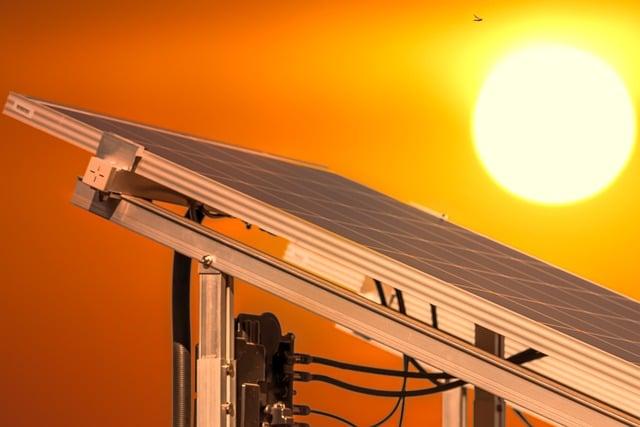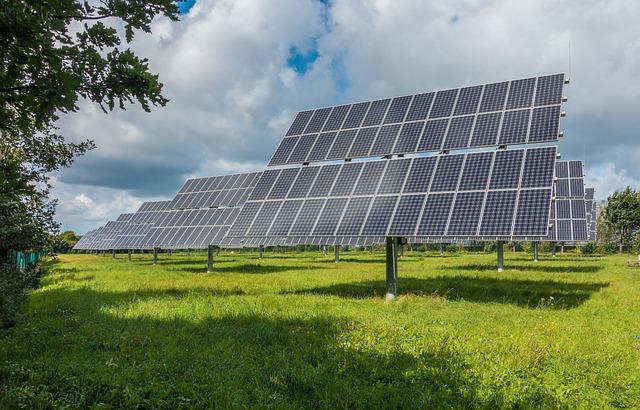In a world increasingly powered by sustainable choices, the decision to harness the sun’s energy has never been more appealing. As solar panels adorn rooftops and transform sunlight into electricity, homeowners and businesses alike find themselves at the crossroads of innovation and investment. But how do you quantify the value of sunshine? Enter the realm of Return on Investment (ROI) for solar energy systems—a pivotal metric that transforms the abstract promise of sustainability into tangible financial insight. This article unravels the complexities of calculating ROI for solar installations, guiding you through the intricate dance of costs, savings, and long-term benefits. Whether you’re a homeowner contemplating the shift to solar or a business eager to illuminate your operations with clean energy, understanding the ROI of your solar investment is the key to making informed, impactful decisions. Join us as we explore the illuminating path of solar ROI, where fiscal prudence meets environmental stewardship.
Evaluating Initial Investment and Installation Costs
When diving into the world of solar energy, one of the primary considerations is the initial financial outlay required for system setup. Understanding this investment involves evaluating several key components. Equipment costs typically account for a substantial portion of the expenditure, encompassing solar panels, inverters, and mounting hardware. Installation costs include labor, permits, and any additional structural work needed to accommodate the new system. It is also crucial to consider potential upgrades to existing electrical systems to ensure compatibility and efficiency.
Furthermore, savvy investors should factor in government incentives and tax credits which can significantly offset these initial costs. A thorough analysis might include:
- Comparing quotes from multiple solar providers
- Understanding warranty terms and potential maintenance expenses
- Estimating energy savings over time
By meticulously assessing these elements, you can better gauge the true cost and set the stage for a more accurate calculation of the system’s return on investment.

Understanding Energy Savings and Utility Bill Reductions
When considering the investment in a solar energy system, understanding the financial benefits it can bring to your home is essential. Energy savings are a significant component of the return on investment (ROI) calculation. By harnessing solar power, homeowners can drastically reduce their dependence on traditional utility services, leading to lower electricity bills. These savings can be broken down into several components:
- Reduced electricity consumption: As solar panels generate power, your reliance on the grid decreases, resulting in lower utility charges.
- Net metering benefits: Excess energy produced by your solar system can often be sold back to the grid, further offsetting your utility costs.
- Tax incentives and rebates: Many regions offer financial incentives to encourage solar adoption, which can enhance your overall savings.
To accurately calculate your ROI, consider not just the immediate reductions in your utility bill but also the long-term financial benefits. Evaluate factors such as the lifespan of your solar panels, expected maintenance costs, and potential increases in energy prices over time. By doing so, you can paint a clearer picture of how solar energy can contribute to your financial well-being.

Incorporating Tax Credits and Incentives into ROI Calculations
When evaluating the return on investment for a solar energy system, it’s essential to factor in the array of tax credits and incentives that can significantly boost your financial benefits. These fiscal advantages, often overlooked, can transform a good investment into a great one. Here’s how you can effectively incorporate these into your calculations:
- Federal Investment Tax Credit (ITC): This credit allows you to deduct a significant percentage of your solar system costs from your federal taxes. As of now, the ITC covers up to 26% of the installation costs, which can be a substantial saving.
- State and Local Incentives: Many states and municipalities offer additional rebates or tax credits that vary widely by location. These incentives can further reduce the upfront costs and should be factored into your ROI calculations.
- Accelerated Depreciation: For businesses, the Modified Accelerated Cost Recovery System (MACRS) allows for the accelerated depreciation of solar assets, enhancing the tax benefits over a shorter period.
By integrating these credits and incentives into your ROI framework, you not only enhance the financial appeal of your solar project but also align your investment with broader sustainability goals. Remember to stay updated on policy changes, as these incentives can fluctuate with new legislation.

Forecasting Long-term Financial Benefits and Payback Periods
When evaluating the potential of a solar energy system, it’s crucial to consider both the long-term financial benefits and the payback periods. These calculations provide insight into how quickly the investment will start generating net positive returns. Long-term financial benefits of solar installations typically include:
- Reduction in electricity bills
- Increased property value
- Potential tax credits and incentives
To estimate the payback period, you’ll need to calculate the initial investment costs and compare them against the annual savings. This period is the time it takes for your energy savings to equal the upfront costs. While these calculations can be complex, considering variables like system degradation and energy price inflation, they provide a clear picture of financial viability over time. Balancing these factors can reveal how sustainable and economically beneficial your solar energy system will be in the long run.
In Conclusion
As we draw the curtains on our exploration of calculating the ROI of a solar energy system, it’s clear that harnessing the power of the sun offers more than just environmental benefits. By understanding the nuances of your initial investment, anticipated savings, and long-term gains, you illuminate a path toward financial clarity and sustainability. Whether you’re a homeowner seeking to reduce utility bills or a business aiming to champion green initiatives, the knowledge of solar ROI equips you with the confidence to make informed decisions. As the sun sets on our discussion, let it also rise on your journey toward a brighter, more sustainable future.

































